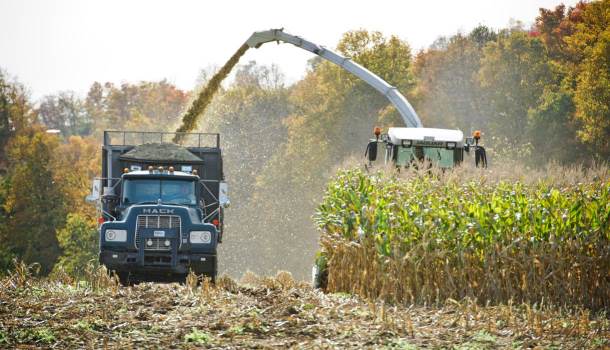January 14, 2025
2025 Grain and Oilseed Industry Outlook Summary

With record soybean and corn harvests, profitable storage options and recovering export demand, the landscape is shifting for U.S. grain and biofuel markets. How are ethanol production, renewable diesel demand and challenges from trade policies and global competition influencing the market?
CoBank Lead Economists, Tanner Ehmke and Jacqui Fatka, recently presented a 2025 Grain and Oilseed Industry Outlook. Read on for key takeaways from the webinar.
Market overview
U.S. corn and soybean crops were the second biggest on record. Soybean prices fell over 20% due to ample supply, including the record South American crop. Corn prices were down almost 1% but recovered due to resilient demand. Wheat prices fell about 10% due to expanded supply in the U.S. and a strong U.S. dollar.
An increasing demand for biofuels may lead to further opportunities for the grain and oilseed market in 2025. Due to California’s low carbon fuel standard, renewable diesel demand is growing. The demand for renewable diesel has driven growth in soybean crush. There is also a growing demand for sustainable aviation fuel (SAF) which could lead to potential tax incentives to encourage its production.
Domestically, feed demand, particularly in the dairy sector, has been strong. Globally, corn and wheat stocks are tight, while soybeans are ample. The market is signaling a preference for corn due to its strong demand. It is expected that corn acreage will rise, while soybean and wheat acreage will likely decline.
Trade, policy and global influence
With a new presidential administration on the horizon and potential new tariffs, some factors around grain trade and exports are uncertain.
The U.S. is no longer the top exporter of corn, wheat and soybeans. With the strong U.S. dollar making American exports less competitive, Russia and Brazil have taken the lead. Export commitments have increased for corn, soybeans and wheat, but prices remain low due to the need for a faster export pace.
Mexico remains a key market for U.S. corn exports; however, trade war risk is high for Mexico along with China. The resignation of Canadian Prime Minister Justin Trudeau and the potential impact of tariffs under the Trump administration could affect trade dynamics in 2025.
The U.S. farm sector received $10 billion in aid to help with higher production costs, which may be beneficial for corn, soybean and wheat growers going into the 2025 planting season.
To dive deeper into the above topics, review the webinar recording along with the presenters’ PowerPoint slides, or read the 2025 Grain and Oilseed Industry Outlook.




